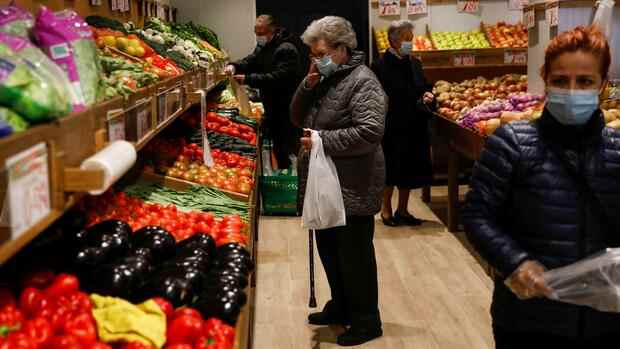Frankfurt Inflation in the euro area continued to rise in November. Consumer prices rose by 4.9 percent compared to the previous year, as the European statistical office Eurostat announced on the basis of an initial flash estimate. Economists had expected an increase to 4.3 percent.
The value is above the target of the European Central Bank (ECB), which is aiming for inflation of two percent for the currency area. In October the inflation rate was 4.1 percent. On Monday, the Federal Statistical Office reported an inflation rate of 5.2 percent for Germany for November. This is calculated somewhat differently than the European measure of inflation.
The main price driver in November was energy, which was 27.4 percent more expensive than the previous year. The prices for services rose by 2.7 percent. If you exclude energy and unprocessed food, the so-called core rate was 2.6 percent.
Economists assess inflation risks differently. The European Central Bank (ECB) attributes the price increase mainly to temporary special effects from the pandemic.
Top jobs of the day
Find the best jobs now and
be notified by email.
In addition to delivery bottlenecks and catch-up effects in consumption, this also includes withdrawing the VAT cut from last year in Germany. In addition, the price of oil fell sharply last year due to the pandemic. Compared to the low values of the previous year, it is now significantly higher.
ECB boss Christine Lagarde recently reiterated her view that she considers the rise in inflation in the euro area to be temporary. However, there are also representatives within the Governing Council who warn against underestimating the dangers of inflation. For example, the outgoing Bundesbank President Jens Weidmann warned in his farewell letter to employees not to “lose sight of the prospect of inflation risks”.
Commerzbank analyst Christoph Weil sees the current figures as a warning signal. “Even if the rate is skewed upwards due to special effects, it shows that the underlying inflation has increased noticeably as a result of the delivery bottlenecks,” he comments. With today’s figures, “the risk has increased that the rate of inflation in the first half of 2022 will be significantly higher than the ECB had previously expected”. He assumes that the central bank will have to revise its inflation forecasts for next year significantly upwards.
The ECB will present the forecasts at its next meeting on December 16. They are eagerly awaited because they are likely to have an impact on the further monetary policy course of the central bank. In December, the ECB wants to decide how to proceed with its massive bond purchases next year. The greater the risk of inflation, the lower the bond purchases are likely to be in the next year.
More: Is high inflation really just a temporary phenomenon?

